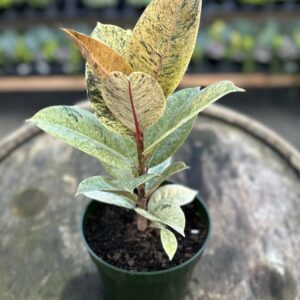Black-Eyed Susan #2
$16.99
Black-Eyed Susan Care
Planting: Choose a location with full sun for your Black-Eyed Susan. Ensure well-drained soil, as soggy conditions can lead to root rot. Space plants about 12 to 18 inches apart.
Watering: Water regularly during the first growing season to establish a strong root system. Once established, Black-Eyed Susans are drought-tolerant and only require watering during prolonged dry spells. Water at the base of the plant to avoid wetting the foliage, which can lead to disease.
Soil: Black-Eyed Susans prefer well-drained soil of average fertility. They can tolerate poor soils but thrive in amended soil with organic matter such as compost.
Mulching: Apply a layer of mulch around the base of the plant to conserve moisture, regulate soil temperature, and suppress weed growth. Keep the mulch a few inches away from the plant’s stems to prevent rot and disease.
Fertilizing: Black-Eyed Susans generally do not require fertilization. However, if the soil is poor, you can apply a balanced, slow-release fertilizer in spring.
Pruning: Deadhead spent flowers regularly to encourage continuous blooming throughout the growing season. Cut back the entire plant to about half its height after the first flush of blooms to encourage a second round of flowering.
Division: Every few years, divide overcrowded clumps of Black-Eyed Susans in spring or fall to rejuvenate the plant and maintain vigor.
Protection: Black-Eyed Susans are generally resistant to pests and diseases. However, monitor for common issues such as aphids or powdery mildew, and treat promptly if necessary with insecticidal soap or fungicide.
Description
Introducing the Black-Eyed Susan, a beloved perennial that brings vibrant color and cheerful charm to any garden or landscape. This native wildflower features bright yellow, daisy-like flowers with distinctive dark brown centers, reminiscent of a “black eye.” Blooming from midsummer to fall, Black-Eyed Susans add a burst of sunshine to borders, meadows, and cottage gardens.
With their tall, upright stems and long-lasting blooms, they attract pollinators such as bees and butterflies, enhancing biodiversity in the garden. Easy to grow and low-maintenance, Black-Eyed Susans thrive in full sun and well-drained soil, making them a perfect choice for beginner and experienced gardeners alike. Experience the beauty and allure of Black-Eyed Susans and add a touch of wild beauty to your outdoor space.








